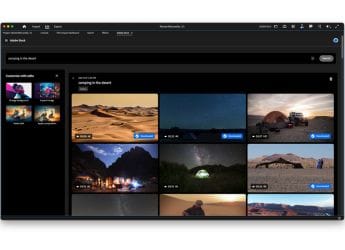- Home
- Internet
- Internet News
- Online museum showcases Britain's hidden art
Online museum showcases Britain's hidden art

By the end of the year, 210,000 paintings will have been dusted off and photographed for inclusion in a ground-breaking online museum, accessible to members of the public at just a click of a button.
"The UK has a very large collection of oil paintings in public ownership and about 80 percent are not on view," said Andy Ellis, the director of the Public Catalogue Foundation which has organised the project with the BBC.
In one of the most ambitious art projects in the world, curators have spent ten years tracking down publicly-owned paintings by 45,000 artists from every corner of Britain, from the Shetlands to the Channel Islands.
Some have been in storage and others hung in buildings where there is no access to members of the public, but they are finally seeing the light of day on a dedicated website, "Your Paintings".
Museums have helped out where they could but the catalogue required some detective work as about 100 researchers tracked down paintings in universities, police and fire stations, libraries and hospitals.
The hunt took them to a zoo, a lighthouse and to art colleges that held some early works by their famous alumni, including David Hockney.
There were other nice surprises.
A London hospital had a Veronese, a huge triptych by William Hogarth adorned a wall of the town hall in Bristol, surrounded by computers and photocopiers, while a Whistler was found in a Cold War bunker.
Unlike the Google Art Project, an online initiative cataloguing works of art from museums across the world, the British website only includes paintings in oil, acrylic and egg tempera.
This is partly because the curators decided that including watercolours and drawings would have busted its £6-million ($9.5-million) budget, largely funded by private donations.
But within these techniques, anything and everything is welcome. The work of thousands of obscure painters, such as a fireman who dabbled during the Blitz, is pictured alongside masterpieces by Rembrandt and Raphael.
Ten percent of the paintings remain unattributed, but the curators hope members of the public may be able to help identify their artists, as well as their often mysterious subjects.
"The project is democratic. We include all the works, irrespective of the quality, the condition of the work," said Ellis.
"The point of this project is to allow everyone to see all the works in the collection and then make the decision themselves about what they like and what they don't like."
He added: "We don't think there is any equivalent anywhere in the world."
Ellis, a former financier who was drawn into the project through his passion for art, is already looking at how to expand the museum to include sculptures.
"It's the ultimate realisation of Andre Malraux's dream of a museum without walls," commented Charles Saumarez Smith, chief executive of the Royal Academy, referring to the post-World War II French writer's vision of how photography would democratise art.
Catch the latest from the Consumer Electronics Show on Gadgets 360, at our CES 2026 hub.
Related Stories
- Samsung Galaxy Unpacked 2025
- ChatGPT
- Redmi Note 14 Pro+
- iPhone 16
- Apple Vision Pro
- Oneplus 12
- OnePlus Nord CE 3 Lite 5G
- iPhone 13
- Xiaomi 14 Pro
- Oppo Find N3
- Tecno Spark Go (2023)
- Realme V30
- Best Phones Under 25000
- Samsung Galaxy S24 Series
- Cryptocurrency
- iQoo 12
- Samsung Galaxy S24 Ultra
- Giottus
- Samsung Galaxy Z Flip 5
- Apple 'Scary Fast'
- Housefull 5
- GoPro Hero 12 Black Review
- Invincible Season 2
- JioGlass
- HD Ready TV
- Laptop Under 50000
- Smartwatch Under 10000
- Latest Mobile Phones
- Compare Phones
- Red Magic 11 Air
- Honor Magic 8 RSR Porsche Design
- Honor Magic 8 Pro Air
- Infinix Note Edge
- Lava Blaze Duo 3
- Tecno Spark Go 3
- iQOO Z11 Turbo
- OPPO A6c
- Lenovo Yoga Slim 7x (2025)
- Lenovo Yoga Slim 7a
- Lenovo Idea Tab Plus
- Realme Pad 3
- Moto Watch
- Garmin Quatix 8 Pro
- Haier H5E Series
- Acerpure Nitro Z Series 100-inch QLED TV
- Asus ROG Ally
- Nintendo Switch Lite
- Haier 1.6 Ton 5 Star Inverter Split AC (HSU19G-MZAID5BN-INV)
- Haier 1.6 Ton 5 Star Inverter Split AC (HSU19G-MZAIM5BN-INV)







![[Sponsored] Haier C90 OLED TV | Dolby Vision IQ, 144Hz OLED and Google TV in Action](https://www.gadgets360.com/static/mobile/images/spacer.png)









